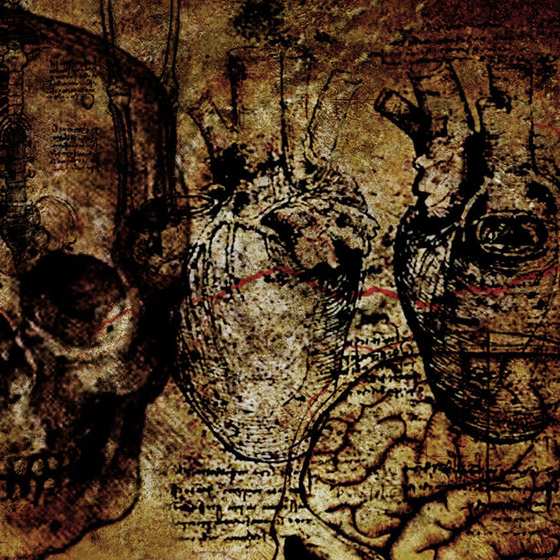Interactive Digital Media on Mobile Platform for Teaching and Learning Neuroscience in a Medical College

Abstract:
Neuroscience
has traditionally been a difficult subject to teach and learn. In an effort to ease
the cognitive burden to the student when learning about the human brain, an interactive
digital project was envisaged, based on the Visible Human Project of US National
Library of Medicine.
It
consisted of two digital sagittal images of the human head, hyperlinked to a series
of sequential transverse-sliced images of the same brain at 10-20 mm intervals from
the top of skull to its base, all loaded on a mobile PC-based offline platform.
Copious labels, descriptive texts, explanatory notes, cross-links and on-the-fly
quizzes supplemented the learning experience, besides rendering it an enjoyable
interactive exercise.
Preliminary
qualitative evaluations from medical students were encouraging. Non-dependency on
Internet connectivity, sophisticated gadgetry or software enhanced its portability,
versatility and usefulness. Comparison with eight similar digital learning media
from other sources on the basis of 7 parameters confirmed the present digital project
to be better than all of them, with a score of 6 on a 7-point scale.
Across
the board viewers were also awed by the single-click, seamless interactivity and
interconnectivity of the digital media-based project, making it an experience worth
remembering by all observers.
While
students can continue to learn from the project already created, definitive usability
testing of the program with standardized instrument will cement its effectiveness.
Furthermore, this work can be expanded to other fields of research and education
which will benefit Health science students, Clinicians, Educators and Researchers
in Anatomy, Radiology and Surgery.
Keywords: Interactivity,
Digital media, College education, Neuroscience, Mobile platform, Standalone
References:
[1]. Ackerman, M. J. (2015). The Visible Human Project. National Library of Medicine, National Institute of Health; Retrieved from
http://www.nlm.nih.gov/research/visible/visible_human.html
[2]. Armstrong, P. (2001). Bloom's Taxonomy. Center for Teaching, Vanderbilt University. Retrieved from
https://cft.vanderbilt.edu/guides-sub-pages/blooms-taxonomy/#2001.
[3]. Center for Human Simulation (2015). University of Colorado Anschutz Medical Campus. Retrieved from:
http://www.ucdenver.edu/academics/colleges/medicalschool/centers/ Human Simulation/Pages/Home.aspx
[4]. Clyne, J. (1994). Human Anatomy on Line. University Corporation for Atmospheric Research. Retrieved from
http://www.ucar.edu/communications/staffnotes/9412/vizman.html
[5]. Chen, D. (2014). Visible Human Slices. National Library of Medicine, National Institute of Health. Retrieved from
http://erie.nlm.nih.gov/~dave/vh/
[6]. Jastrow, H. (2014). Workshop Anatomy for the Internet, Atlas of Human Sections in the Internet. Johannes Gutenberg University, Mainz. Retrieved from
http://www.unimainz.de/ FB/Medizin/Anatomie/workshop/VH/male/axial/2/D/1107ok
Prof.html
[7]. Lewis,
J.R. (1995). IBM Computer Usability Satisfaction Questionnaires: Psychometric Evaluation
and Instructions for Use. International Journal of Human-Computer Interaction, 7:1,
57-78.
[8]. North, C., Shneiderman, B., Plaisant, C. (1996). Visible Human Explorer. Computer Science, Human Computer Interaction Lab, University of Maryland. Retrieved from
http://www.
cs.umd.edu/hcil/visible-human/vhe.shtml
[9]. Sundsten, J.W., Mulligan, K.A. (2008). Neuroanatomy Interactive Atlas, Digital Anatomist Project. Department of Biological Structure, University of Washington. Retrieved from
http://www9.biostr.washington.edu/cgi-bin/DA/PageMaster?atlas:NeuroSyllabus+ffpathIndex:
Splash^Page^Syllabus+2
[10]. The University of Michigan Visible Human Browsers (2011). University of Michigan. Retrieved from
http://vhp.med.umich.edu/tools2.html#pelhead
[11].Teistler, M. (2015). Explore the Virtual Patient. Virtual Scenes for Medical Education and Diagnostics. Retrieved from
http://www.umi.cs.tu-bs.de/virtusmed/index_en.html
[12]. Visible Human Server (1999). Computer Science Department, Ecole Polytechnique Federale de Lausanne. Retrieved from
http://visiblehuman.epfl.ch/samples.php
[13]. Visible
Human Digital video data files (2015). National Technical Information Service,
US Department of Commerce. Retrieved from http://www.ntis.gov/products/visible-human/
[14]. VH Dissector for Medical Education (2015).Touch of Life Technologies Inc. Retrieved from
http://www.toltech.net/anatomy-software/solutions/vh-dissector-for-medical-education
[15]. Zhao, H. (2002). Fitts' Law: Modeling Movement Time in HCI. Computer Science, University of Maryland. Retrieved from
https://www.cs.umd.edu/class/fall2002/ cmsc838s/tichi/
fitts.html

